2010 Compiled Ruffed Grouse Forecast
Obviously we love hunting for ruffed grouse, “the king of all gamebirds” (long live the king!), so we chase down as much info as we can about these birds. Enough info to fill a book….
Pheasants Forever does a good job with its annual pheasant forecast. But since ol’ ruff seems to have fallen out of favor a bit with upland bird hunters, no one takes the trouble to do a grouse-specific forecast – online anyway: The Upland Almanac has a state-by-state forecast (not just ruffs) in its autumn issue (we’ve excerpted a bit of that info in what follows, but not all – BUY THAT ISSUE!).
Anyhow, we decided to round up everything we could find about how this season’s ruffed grouse hunting is looking – and we’re happy to say it’s looking good. We’ve compiled this research into the following alphabetical state-by-state list. It’s not comprehensive, but all the major grouse states are here, plus some others.
> Reports are compiled from state fish and game info, newspaper reports, Paul Fuller’s Bird Dogs Afield email newsletter and the aforementioned issue of The Upland Almanac.
> Click the link to go to that state. States not known as grouse states are in the “Other States” section. These states include: CT, MD, MA, MO, MT, NE, NJ, ND, OH, RI, VA, WV and WY.
> Remember that these are overall forecasts, and may not mirror what you actually find!
Major Grouse States
Maine
Forecast = Good to Very Good!
Michigan
Forecast = Good to Very Good!
Minnesota
Forecast = Good
New Hampshire
Forecast = Good
New York
Forecast = Good
Pennsylvania
Forecast = Fair to Very Good
Vermont
Forecast = Good to Very Good!
Wisconsin
Forecast = Good
Ontario, Canada
Forecast = Fair to Very Good
Support the RGS!
_____
Maine
Forecast = Good to Very Good!
For some unknown reason, the Maine DFW doesn’t produce an annual grouse forecast. Are they unaware of the fact that the wily furry forest chicken is a huge draw for their state? Do they take for granted that the state will always be “flush” with birds? Who knows.
Luckily, V. Paul Reynolds – editor of the Northwoods Sporting Journal and a former information officer for the DFW – asked a few questions, got some answers and published his findings in the Lewiston Sun Journal newspaper. Here are the applicable highlights:
> You would think that grouse…would be more plentiful in more southerly areas of the state that experienced more moderate winters. But according to state game bird biologist Brad Allen, “Grouse populations (up North) were high last fall, the fourth highest ever reported based on data collected during the 2009 moose hunts.” One cause of this, according to Allen, may have been less seasonal rainfall up north during the spring nesting season in 2009.
> Allen: “…nesting conditions in April and May 2010 were close to perfect, and I’m excited about the prospect for abundant fall gamebird populations…. Pleasant (and two weeks early) spring weather and habitat conditions in Maine this past spring created conditions for gamebirds that were much better than most recent spring conditions. I predict that upland bird hunting…will be improved this year.”
> “Also, hunting success should be good statewide. Northern Maine will again be a bright spot for grouse and woodcock hunting.”
> Allen on woodcock: “Despite my own personal observations on woodcock numbers, the indices for singing male woodcock are not significantly different than 2009. The singing ground survey…provide an index to the population and can be used to monitor annual changes. I thought the statewide results would be higher in 2010 as the surveys I conducted in late April translated to significantly more woodcock. But when all the data were tallied across the state, Maine’s index was only slightly better than 2009.”
In his forecast, Paul Fuller stated: “I continue to speak with folks that are in the woods on a daily basis and they report excellent grouse numbers. Broods are decent size and there appear to be more broods than in the past few years.”
From The Upland Almanac: “Very good grouse action is predicted statewide, especially in northern Maine.”
We’ll be there in 2 weeks!
Michigan
Forecast = Good to Very Good!
The following is excerpted from this news article:
> Michigan’s grouse season looks promising this fall because spring started about two weeks early this year, [said Al Stewart, upland bird specialist for the MI DNR]. It was generally warmer and more dry than usual during the peak nesting season in May and early June when grouse chicks are most vulnerable to adverse weather.
> It helps that Michigan’s grouse populations may be at the top of their 10-year population cycle this year, Stewart said. Grouse populations go up and down in basically 10-year cycles for unknown reasons. “We have been anticipating that Michigan’s peak grouse populations would be seen in 2009 and 2010 and that may still be true,†he said. “We may be past the peak, but the bottom line is that we are still in the upper end of the peak.â€
> Stewart, who is an avid grouse and woodcock hunter himself who spends as much as 30 days every fall hunting those gamebirds, said bird hunters should concentrate on finding birds in thick aspen stands near water in September and early October. Look for wild raisin or autumn olive shrubs in the same vicinity…. The aspen should be about the size of your wrist…about 10 to 12 years old.
> Later in early to mid-October, hunters should concentrate on areas with lots of gray-stem dogwood… Later still, hunters should be looking for find birds near stands of crabapple trees…. When the snow flies in December, hunters should find birds in thick aspen stands with edges of tag alders. Look too, Stewart said, for mature trees covered with wild grape vines that are another favorite grouse food.
> Stewart said the best time to pursue grouse is between Oct. 16 and Oct. 31, when the flush rates are at the highest…. The peak woodcock flush rates are between Oct. 1 and Oct. 15.
Minnesota
Forecast = Good
While the 2010 spring drumming count was down from last year – last year’s count was 2.0 per stop while this year’s count was 1.5 – 2009 might have been the peak year for the current cycle, and grouse coordinator Ted Dick reports that biologists and foresters are seeing a large number of birds. This suggests that the hatch and brood survival were good.
In past years with similar drumming counts (1981, 1988, 1996, 2000 and 2008), hunters shot an average of 600,000 grouse. However, this year the MN DNR is predicting fewer hunters – not a good sign, but great if you’re going.
Note that drumming counts vary from about 0.8 drums per stop during years of low grouse abundance to about 1.9 during years of high abundance.â€
Mark Fouts, director of regional operations for the Ruffed Grouse Society, said: “I think we’ll be okay. We had the early spring. People were seeing quite a few birds, good brood sizes, and people were seeing a lot of woodcock.â€
We’ll be there in 5 weeks!
Some of the above MN forecast is excerpted from two Duluth News Tribune articles (here and here).
New Hampshire
Forecast = Good
From Paul Fuller’s forecast: A mild winter and early spring means male grouse were drumming well before the spring drumming count survey. So simple observations might be the best indicator. Biologist Julie Robinson reports that biologists in the northern portion of NH say they are seeing substantially more grouse (with broods) than they have for many years. Woodcock observations are also up.
The Upland Almanac reported: “Juveniles and a mild spring should result in good grouse hunting this fall. Woodcock prospects are described as ‘good and improving.'”
New York
Forecast = Good
The state didn’t issue a grouse forecast, but it sounds like New York will benefit from the same early spring and dry weather as the New England states. The Upland Almanac said the St. Lawrence Valley and western Adirondacks will have “especially good hunting.”
It added that woodcock are “in good supply” in the state.
Pennsylvania
Forecast = Fair to Very Good
Some quick Pennsylvania grouse facts:
> Its state bird is the ruffed grouse.
> It’s the home of the Ruffed Grouse Society.
> It’s home to lots of good grouse habitat and lots of grouse hunters.
So why is there no 2010 grouse forecast issued by the PA DNR – or, for that matter, PA Tourism?
Luckily intrepid bird hunters have looked into it. Paul Fuller reported:
> Ian Gregg, game bird section supervisor for the Pennsylvania Game Commission, reports that the 2009-10 flushing rate was 1.40 which is just about at the 44-year average of 1.41.
> Ian feels that grouse hunting in the northwest and north-central regions should be good to excellent this season. For the southwest, south-central and northeast, the prediction is for fair grouse hunting. And for the southeast, the prediction is also fair.
> Looking far ahead: For the northwest and north central regions, Ian said: “Those with their finger on the pulse of the timber market tell me the rates of harvest over the next few decades in this part of Pennsylvania may put enough land into good grouse cover that the ‘good old days’ are just ahead.”
The Upland Almanac reported: Excellent hunting in the Northwest and north-central counties, fair hunting in the Northeast and southwest counties and not so good in the south central and southeast regions. Woodcock hunting should be like recent years.
Vermont
Forecast = Good to Very Good
From Paul Fuller:
> Paul Hamelin, biologist for the Vermont DFG, noted that Vermont does not conduct drumming surveys, grouse brood counts or anything else that attempts to qualify annual ruffed grouse production. Therefore, he sent an informal request to 10 state foresters and biologists. “The consensus from their anecdotal comments seems to be that ruffed grouse broods sighted this summer were not especially large, about 4-6 birds per hen,” said, but added that “…one retired forester who spends a lot of time afield and is an avid grouse hunter reported ‘there seems to be more birds this year than in the past couple of years….'”
That last observation is supported by The Upland Almanac’s forecast: “Hunting quality should mirror last fall’s exceptional season,” especially in the Northeast Kingdom and Champlain Valley.
Wisconsin
Forecast = Good
Wisconsin is yet another state that didn’t bother to issue a hunting forecast for ruffed grouse. Hello! Small game license sales? Anyone?
Anyhow, it did give us this in a September press release: “Despite a slight drop in statewide population levels, Wisconsin ruffed grouse hunters should also experience a rewarding season.”
A bit more detail from a June press release:
> Wisconsin’s ruffed grouse population appears to have deviated from its 4-year rise, according to data that state wildlife managers collected during the 2010 spring drumming counts. “Statewide, the ruffed grouse population decreased about 5 percent between 2009 and 2010,†said Sharon Fandel, acting upland wildlife ecologist.
> “The southwest showed the greatest decrease in drumming activity over the last year, with a 21 percent decrease,” Fandel said. “The central and northern regions showed a slight decrease of 4 percent and 6 percent, respectively, whereas the southeast region experienced a large increase of 60 percent more drums than in 2009. The southeast region contains the least amount of grouse cover in the state and minor increases in grouse drumming numbers can have a large influence on the drumming index.”
> Biologists note that while the 5 percent statewide decrease from last year’s drumming survey results supports the idea that the ruffed grouse population may be on the downswing, the change is not statistically significant.
Wisconsin’s previous high in the grouse cycle was 1999 – meaning the latest peak is about now. The DNR noted, “It would appear that Wisconsin has reached the peak of the current grouse cycle.
From an article in the Duluth News Tribune: “Good brood-rearing conditions in the summer of 2010 could set the stage for good numbers of grouse in the fall,” said Brian Dhuey, who compiled the 2010 Ruffed Grouse Drumming Survey for the Wisconsin DNR.
Ontario, Canada
Forecast = Fair to Very Good
From Paul Fuller: “Peter Davis, northeast regional biologist for Ontario Ministry of Natural Resources, reports that early and generally drier spring weather conditions across much of northeastern Ontario in 2010 were favorable to early grouse brood production. Depending upon food availability, the prediction is for fair to excellent grouse populations in the northeast, with the Wawa and Manitouwadge areas being on the excellent side.”
Other States
Brief comments below are excerpted from The Upland Almanac unless otherwise noted.
Connecticut
“Grouse populations remain stable and hunting is fair…. Woodcock numbers remain at good levels.†Woodcock hunting prospects are “quite good.”
Maryland
Grouse populations are “low but stable” in western Maryland.
Massachusetts
Biologists predict good grouse hunting in the western half of the state, with woodcock hunting “pretty promising.”
Missouri
A recent emergency closure of the ruffed grouse season – due to low grouse numbers – means Missouri won’t have a grouse season this year for the first time in more than 25 years.
“It didn’t make sense to have people hunting grouse if we were going to be bringing [birds] in from other states to try to build the population,†said Wildlife Division chief DeeCee Darrow. “Our grouse numbers are so low right now that very few hunters pursue them, and very few are taken each year. This is probably a good time to pause and regroup.â€
Ruffies are native to Missouri, but the state is near the southwestern edge of the species’ range. There had been quite a few grouse there, but old-time market hunting and habitat destruction really hammered the population. The Missouri Conservation Department began a ruffed-grouse restoration program in 1959, and opened its first modern hunting season in 1983. Earlier this year, the agency’s Regulations Committee recommended closing the season.
Montana
The following info is from the Great Falls Tribune:
> Rick Northrup, Montana Fish, Wildlife & Parks gamebird coordinator, said the bad weather in late May and early to mid-June affected grouse and pheasants in northwest Montana, in north-central Montana and the western portion of FWP Region 6. “In these areas, upland gamebird hunters in general can expect to see gamebird numbers similar to or lower than last year’s,†Northrup said. “Moisture and cool temperatures generally tended to be less of a concern in other portions of the state, although there are going to be local exceptions.â€
The article’s author, Michael Babcock, said: “From where I hunt, last year’s season appeared to be pretty grim. Saying that this year will be about the same or worse gives me nothing to crow about.”
Ouch.
Nebraska
No predictions, but the hunting season for this upland game species will be a month longer than in past years. Grouse season opens in Nebraska on Sept. 18 and runs through Jan. 31, 2011. This aligns the season with the close of pheasant and quail seasons, the state said.
New Jersey
Supposedly fair to good hunting north of Interstate 80 [we’ve hunted there, not so sure it’s that good!], with the well-known “good” woodcock shooting of migratory birds in Cumberland and Sussex counties.
North Dakota
North Dakota has been crowing about its grouse this year. Its spring survey indicated a 10% population increase statewide from 2009, and the state is probably approaching the high end of the cycle for bird numbers.
However, “the highs are not as high as they once were, while the lows seem to get lower.†[From an AP article. Answer: Cut some trees!]
Ohio
Grouse numbers are very low and hunting prospects are “bleak.” Decent shooting for migratory woodcock along the Ohio River.
Rhode Island
Very low grouse populations, decent woodcock at certain management areas.
Virginia
Fair to good hunting success, best in southwest Virginia.
West Virginia
Even though this state was the home of George Bird Evans, we’re going to have to include it here in the “Other States” section simply because not much info is available. Not from the state or newspapers. The Upland Almanac reported that hunting will be
“slightly better” than last fall, though woodcock hunting should be “excellent.”
Wyoming
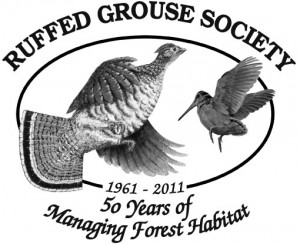 Al Langston of Wyoming Game and Fish: “We’re anticipating fairly good hunting for blue and ruffed grouse and the mountain ranges.”
Al Langston of Wyoming Game and Fish: “We’re anticipating fairly good hunting for blue and ruffed grouse and the mountain ranges.”
Support the RGS!
If you’re a grouse hunter, or just an upland bird supporter, and are not a member of of the Ruffed Grouse Society, there’s no better time to join than right now. The RGS continues its relentless work to get more woodland upland habitat created, and is just about to support its 50th birthday. Sign up here.
Category: 2010, CT, Forecasts/counts, MA, MD, ME, MI, MN, MO, MT, ND, NE, NH, NJ, NY, OH, ON, PA, RI, Ruffed Grouse, SBH, VA, VT, WI, WV, WY

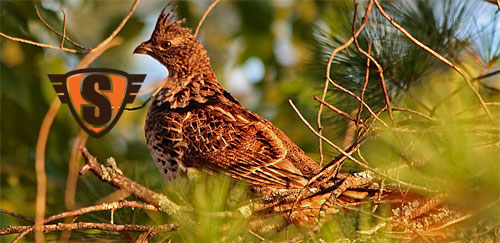




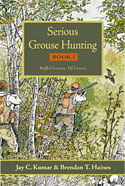


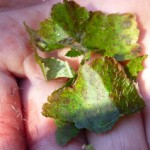
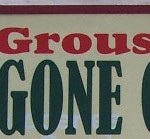
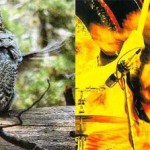
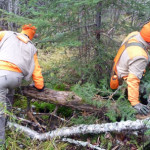
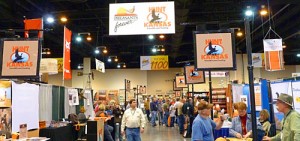
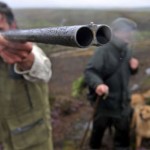
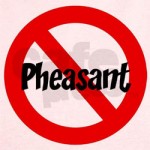
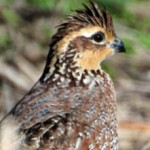
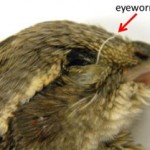

Terrible that WV has no forecast on grouse populations. Last winter was a hard Winter with plenty of snow that left the grouse with good cover (cold winter without snow is much harder on the birds). Excellent mast crop leading into to 2010-2011 Winter. First part of the season has been good for flushes for my wife and I but not good for falling birds. Hopefully the second half, January and February we will see some birds fall.
I found this site by accident however I am saving it to my favorites list . I intend to hunt Michigan,Wisconsin and the waste land of Ohio next year and this site looks very helpful. Thanks for what appears to be good information.
The years George Bird Evans hunted grouse in WV happened to parallel those years that I followed my setters through the old grown up farms. The farms have turned into timber and grouse numbers are down because of lack of habitat. “Hope Springs Eternal”, maybe someday we’ll see 30-40 flushes like it was at George’s favorite cover, the Davis Place.
I look forward to reading SGH.
Hi
I been hunting a large area for the last 25 years, there is a forest fire access road that runs across, thus we are able to cover a great area, in a day of hunting.
In recent years we have been able to bag 10 to 15 total yearly, i have not noticed increase in population, but what i have seen is heavy decrease in the last 10 years, before this, it was not hard to bag daily, 3 or 4 each person. I fear that the numbers will never return.
I agree that studies of population is a must, its to bad that all hunters cant contribute to this study since we are out in the woods just about every weekend, once seasons opens, weather permitting.